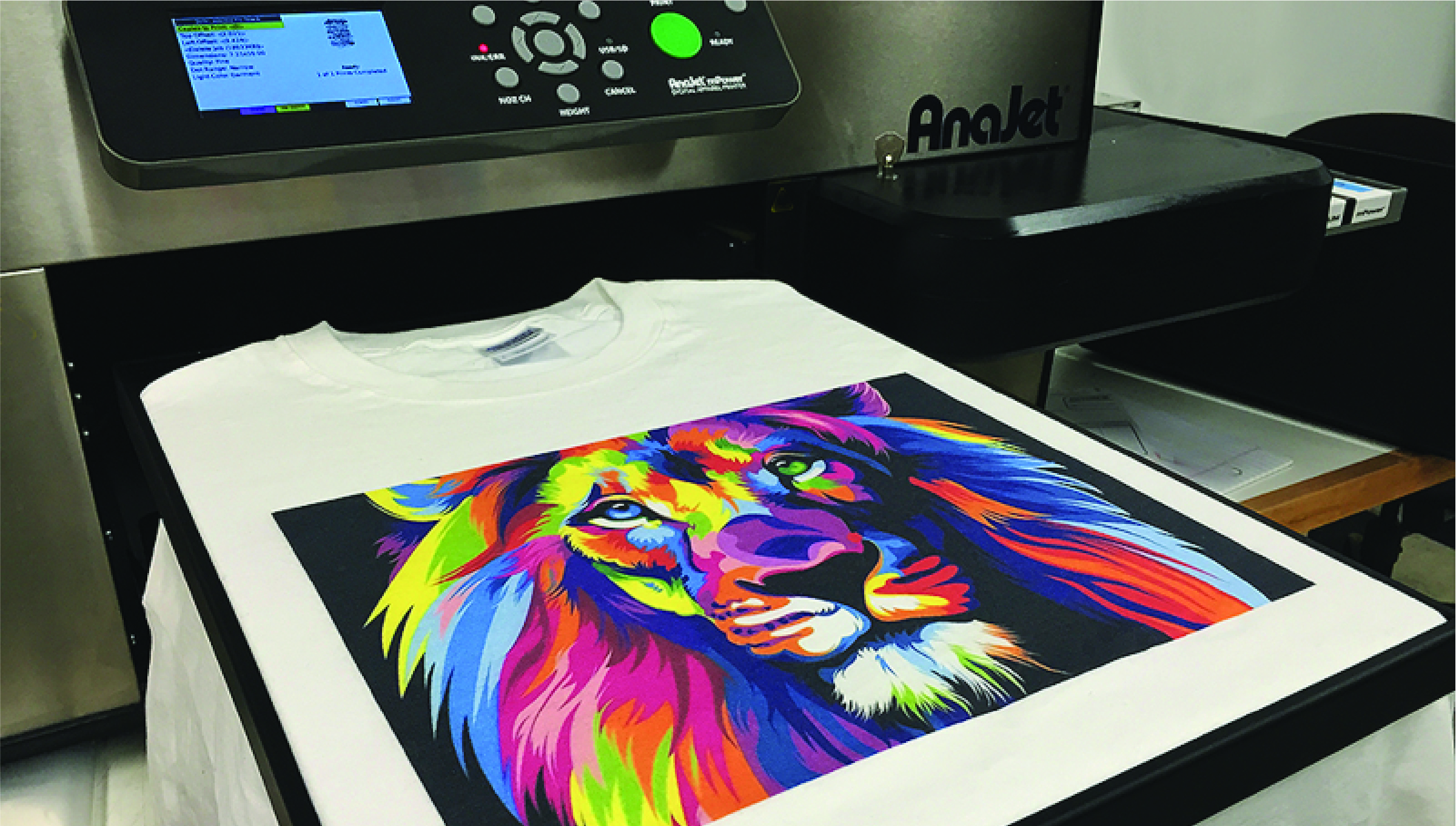Corporate Branding
Screen Printing
Screen printing is a printing technique where a mesh is used to transfer ink (or dye) onto a substrate, except in areas made impermeable to the ink by a blocking stencil. A blade or squeegee is moved across the screen to fill the open mesh apertures with ink, and a reverse stroke then causes the screen to touch the substrate momentarily along a line of contact. This causes the ink to wet the substrate and be pulled out of the mesh apertures as the screen springs back after the blade has passed. One colour is printed at a time, so several screens can be used to produce a multi-coloured image or design.
Traditionally, silk was used in the process. currently, synthetic threads are commonly used in the screen printing process. The most popular mesh in general use is made of polyester. There are special-use mesh materials of nylon and stainless steel available to the screen-printer. There are also different types of mesh size which will determine the outcome and look of the finished design on the material.
The technique is used not only for garment printing but for printing on many other substances, including decals, clock and watch faces, balloons, and many other products. Advanced uses include laying down conductors and resistors in multi-layer circuits using thin ceramic layers as the substrate.
Embroidery
Embroidery is the craft of decorating fabric or other materials using a needle to apply thread or yarn. Embroidery may also incorporate other materials such as pearls, beads, quills, and sequins. In modern days, embroidery is usually seen on caps, hats, coats, overlays, blankets, dress shirts, denim, dresses, stockings, scarfs, and golf shirts. Embroidery is available in a wide variety of thread or yarn colour.
Some of the basic techniques or stitches of the earliest embroidery are chain stitch, buttonhole or blanket stitch, running stitch, satin stitch, and cross stitch. Those stitches remain the fundamental techniques of hand embroidery today.
The process used to tailor, patch, mend and reinforce cloth fostered the development of sewing techniques, and the decorative possibilities of sewing led to the art of embroidery. Indeed, the remarkable stability of basic embroidery stitches has been noted:
It is a striking fact that in the development of embroidery .There are no changes of materials or techniques which can be felt or interpreted as advances from a primitive to a later, more refined stage. on the other hand, we often find in early works a technical accomplishment and high standard of craftsmanship rarely attained in later times.
The art of embroidery has been found worldwide and several early examples have been found. works in China have been dated to the warring states period (5th–3rd century bc). In a garment from migration period Sweden, roughly 300–700 ad, the edges of bands of trimming are reinforced with running stitch, back stitch, stem stitch, tailor’s buttonhole stitch, and whip stitch, but it is uncertain whether this work simply reinforced the seams or should be interpreted as decorative embroidery.
DTF Printing

WHAT IS DTF PRINTING?
I’m sure you’ve heard of dtf printing before but may not be familiar with how it works. or perhaps you got it confused with dtg printing.
dtf stands for direct to film. this technique involves printing your design directly onto a film and then transferring it to a t-shirt made of cotton, polyester, or their blends, regardless of their colour, as it can work with white ink.
Digital to Garment Printing
Direct-to-garment printing (DTG) is a process of printing on textiles using specialized aqueous ink jet technology. DTG printers typically have a platen designed to hold the garment in a fixed position, and the printer inks are jetted or sprayed onto the textile by the print head. DTG typically requires that the garment be pre-treated with a PTM or Pre-treatment machine allowing for the following:
- Stronger bond between garment fibers and the pigmented inks
- Lays down loose fibers to provide for a smoother substrate
- Chemically reacts with the inks to promote drying and curing
Since this is a digital process the print is sharper and has a higher resolution, or DPI, than traditional printing methods such as screen printing. However, unlike screen printing, there is no long setup or clean-up process, and DTG has the ability to print just one single shirt for minimal cost.
